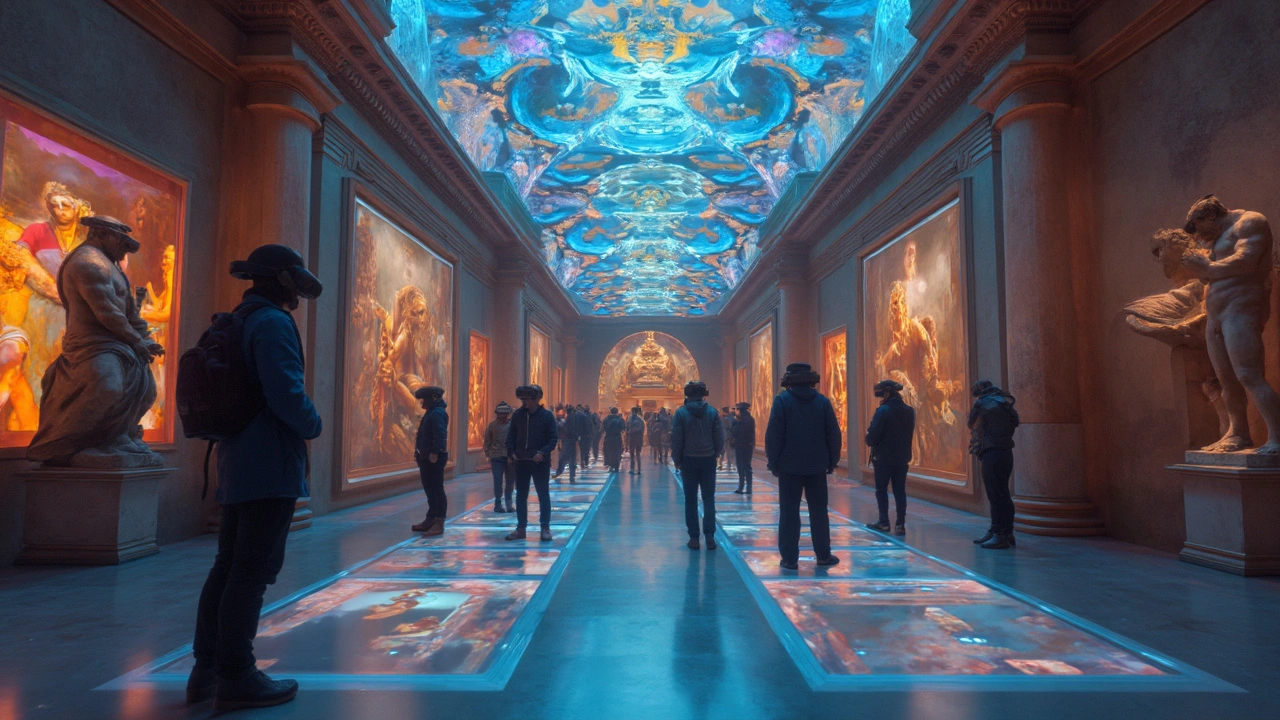Technology in Museums: Bringing History to Life with Digital Tools
Walking into a museum used to mean quiet rooms, glass cases and long info panels. Today you’ll find touch screens, virtual reality headsets and smartphone guides that turn a static display into a hands‑on adventure. This shift isn’t just for show – it helps visitors understand artifacts faster and remember them longer.
One of the biggest changes is the rise of augmented reality (AR). Point a phone at a dinosaur skeleton and see muscles, skin and movement overlay the bones. It’s like watching a prehistoric animal walk across the floor without leaving the exhibit. AR works on most phones, so museums can offer the experience without expensive hardware.
Virtual reality (VR) takes you even farther. Put on a headset and you can step inside an ancient city, explore a shipwreck, or walk through a space station. The immersion makes complex history feel personal. Many museums now have short VR stations that let you try a scene for a few minutes before moving on.
Interactive touch displays are another staple. Instead of reading a long paragraph, you tap tabs to see photos, videos or 3D models. Kids love the game‑like feel, and adults appreciate the quick answers. These screens also let museums update content easily – swap a video or add a new fact without reprinting panels.
Top Tech Trends in Modern Museums
Besides AR and VR, museums are adopting AI‑driven recommendation engines. When you scan your ticket, the system suggests nearby exhibits based on your interests. Audio guides have moved from bulky devices to apps that play in your own headphones, often with multi‑language support.
Beacons placed around galleries can push short notifications to your phone, giving you extra details exactly when you stand in front of an object. Some venues are experimenting with holographic projections that float artifacts in mid‑air, giving a 360‑degree view without a physical piece.
Data analytics also play a role. Sensors track how long visitors stay at each exhibit, helping curators see what grabs attention and what needs tweaking. This feedback loop makes future shows more engaging.
Tips to Make the Most of Tech‑Driven Exhibits
1. Charge your device before you go. A dead battery means you’ll miss AR overlays and app guides. Bring a portable charger if you plan a long day.
2. Download the museum’s app ahead of time. Some places require you to install the app on arrival, and pre‑loading saves time.
3. Try the free demos first. Many VR stations have short previews; start there to see if you enjoy the experience before spending extra time.
4. Don’t forget the basics. A good pair of headphones can improve audio guide sound quality, and a notebook can help you jot down thoughts that an app might miss.
5. Share responsibly. If you’re filming, watch for signs asking you to turn off cameras. Respect the space and other visitors – tech is great when it doesn’t become a distraction.
The future of museums is a blend of old and new. Artifacts stay the heart of the story, but technology makes the story accessible to everyone, from kids to tourists who don’t speak the local language. Next time you plan a museum visit, bring your phone, keep an open mind, and let the digital tools turn a walk through history into an interactive adventure.
Art Meets Technology: The Future of Popular Museums
In a rapidly digitalizing world, museums are embracing technology to enhance visitor experiences. From virtual reality exhibits to interactive displays, art institutions are exploring innovative ways to engage the public. This shift not only attracts more visitors but also provides unprecedented access to art and culture. Discover how these technological advancements are transforming the way we experience art.




